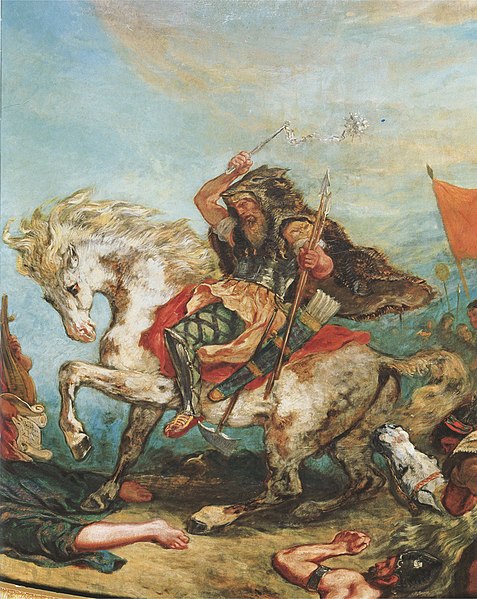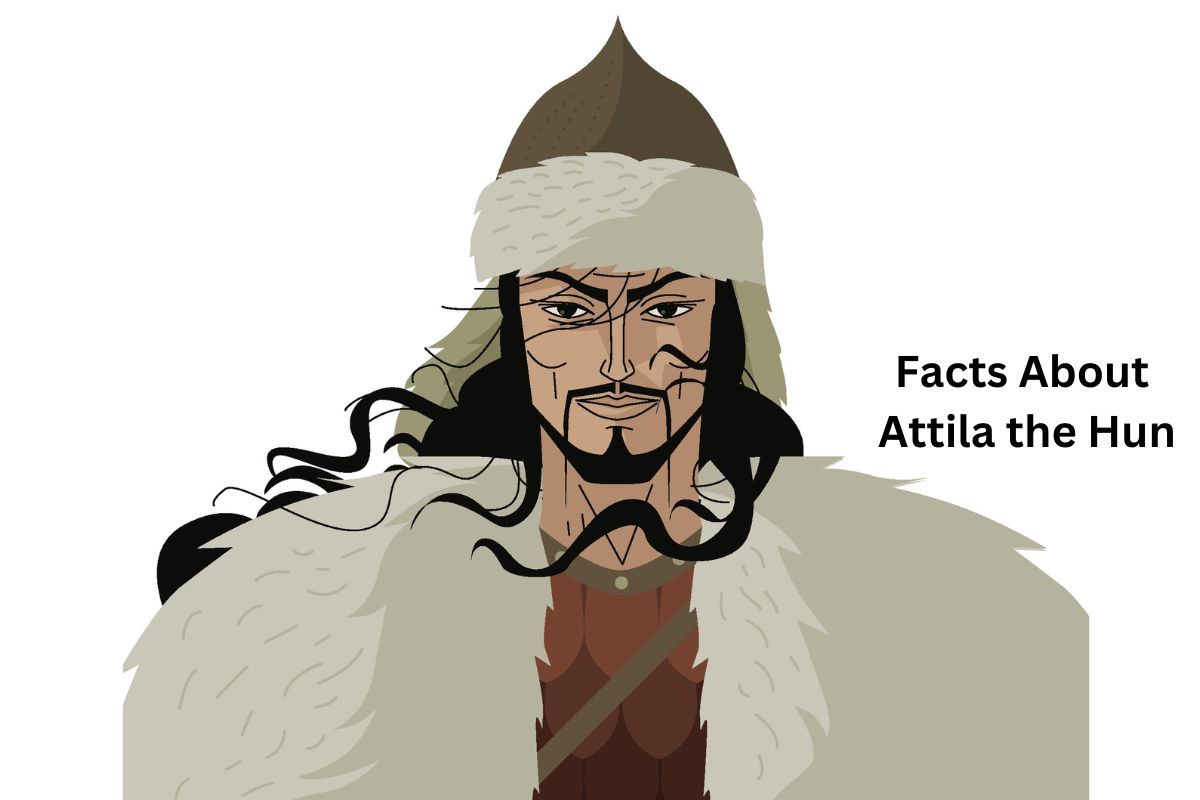Attila the Hun, born around 406 AD, was a formidable leader of the Huns during the 5th century. He emerged as a dominant force in Europe and Asia, ruling over a vast Hunnic Empire that stretched from the Danube to the Volga River.
Attila is renowned for his military campaigns, which struck fear into the heart of the Roman Empire, earning him the title “Scourge of God.”
His prowess in both diplomacy and warfare allowed him to shape the geopolitical landscape of his time. Attila’s mysterious death in 453 AD marked the end of an era, but his legacy endures as a significant figure in history and popular culture.
Attila the Hun Facts
1. Born around 406 AD
Attila the Hun, one of history’s most prominent leaders, is believed to have been born around the year 406 AD.
His place of birth is thought to be in the region that corresponds to modern-day Hungary. This region was part of the vast Hunnic territory during his time.

2. Leader of the Huns
Attila’s ascent to leadership among the Huns marked a significant chapter in their history. After the death of his uncle, King Rugila, in 434 AD, Attila and his brother Bleda assumed joint leadership of the Hunnic tribes.
This leadership position placed Attila at the forefront of the Hunnic people, shaping their destiny and influence in the surrounding regions.
3. Ruled a vast Hunnic Empire
Attila’s reign as the leader of the Huns saw the rapid expansion and consolidation of a formidable Hunnic Empire. This empire encompassed a vast expanse of territory across both Europe and Asia.
Stretching from the Danube River in the western reaches to the Volga River in the east, and from the Black Sea in the south to the Baltic Sea in the north, Attila’s domain exerted control over numerous Hunnic tribes and confederations.
His leadership established the Huns as a dominant force in the Eastern European and Eurasian steppes, setting the stage for his later military campaigns and interactions with major powers like the Roman Empire.
4. Conducted military campaigns in Europe
Attila the Hun is perhaps best known for his military campaigns, particularly in Europe. He led several devastating invasions into the Eastern Roman Empire (also known as the Byzantine Empire) during the mid-5th century.
His campaigns were characterized by their speed, coordination, and the fear they instilled in the Roman populace.
Attila’s forces crossed the Danube River and ravaged the Balkans, demanding significant tribute from the Eastern Roman Emperor Theodosius II in return for peace. He was not easily deterred and launched multiple incursions into Roman territory, exploiting the weakened state of the empire.
5. Known as the “Scourge of God”
Attila earned the epithet “Scourge of God” due to his ruthless and destructive reputation. His military campaigns were marked by brutality and the widespread devastation of cities and regions under his control.
This title reflected the fear and awe that Attila inspired in both his enemies and allies, and it underscored the widespread belief that his actions were a divine punishment or scourge visited upon the people.
6. Skilled diplomat and warrior
While Attila was a formidable warrior and military leader, he was also a skilled diplomat. He recognized the importance of diplomacy in achieving his goals and often used it in conjunction with military force.
He negotiated with the Roman Empire and secured several treaties that allowed him to extract tribute and concessions. Notably, the Treaty of Margus in 435 AD and the Treaty of Anatolius in 447 AD were significant diplomatic achievements that benefited the Huns economically.
Attila’s ability to balance diplomacy and warfare showcased his strategic acumen and made him a multifaceted leader on the geopolitical stage. This combination of military might and diplomacy allowed him to maintain and expand his empire for a time.
7. Died in 453 AD
Attila the Hun’s death occurred in 453 AD, marking the end of his remarkable and tumultuous reign. The circumstances surrounding his death remain a subject of historical debate and mystery.
According to one account, he died on his wedding night to a woman named Ildico, possibly due to a severe nosebleed or internal bleeding. Others suggest the possibility of assassination, as the details are not well-documented.
8. Left a lasting historical legacy
Attila’s impact on history is enduring. His leadership and the Hunnic Empire left a profound imprint on the course of events in Europe and Asia during the late antiquity and early Middle Ages.
He is remembered as both a conqueror and a symbol of Hunnic power and nomadic influence in this critical period of transition.
9. Primary accounts by Roman historians
Most of what we know about Attila the Hun comes from the accounts of Roman historians of the time.
Historians such as Priscus, Jordanes, and the Byzantine historian Procopius provided invaluable insights into Attila’s life, campaigns, and diplomacy through their writings.
These accounts offer valuable historical perspectives on the Hunnic leader.
10. Popular figure in literature and media
Attila the Hun’s legendary status has made him a popular and enduring figure in literature, film, and various forms of media.
He has been portrayed in countless historical novels, movies, and TV series, often as a formidable barbarian leader who posed a significant threat to the Roman Empire. His name and image continue to captivate the public’s imagination, making him an iconic figure in popular culture.
